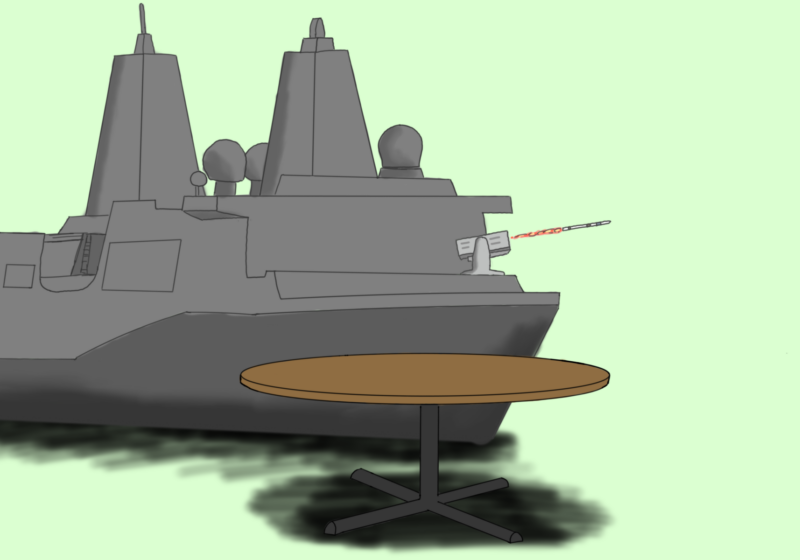Just over a year ago, researchers at UR’s Institute of Optics discovered that high-intensity lasers could be used to change the properties of metals in a way that causes them to absorb all light, making them pure black. Now, researchers are saying they believe it is possible to change the properties of virtually any metal and manipulate them so as to make the metal appear any color.
Headed by Associate Professor of Optics Chunlei Guo, a team of researchers that included University students as well as postdoctoral researchers at the Institute of Optics conducted experiments in 2006 to see how radiation from extremely quick, high-intensity laser pulses would affect metal. They were surprised when they realized that such pulses could increase how metals absorbed light to such a degree that they literally absorbed all light and became pitch black.
This revelation made Guo consider the possibility that a metal can be altered in such a way as to control what colors it absorbs and what colors it reflects, thus controlling what color it appears to an observer.
“The color we perceive from a certain object comes from the light reflected off that object,” Guo said. “For most metals, they reflect the entire spectrum, so you see the metals as whitish. Using high-intensity laser pulses, we can controllably produce a range of nanostructures and microstructures on a metal surface. When this is done right, these small structures will selectively absorb a certain spectral range of light, leaving the remaining color [to] bounce off the metal surface and giving the appearance of that color.”
The laser pulses actually change the surface of the metal, though on a microscopic scale that cannot be seen or felt.
This change causes the metal to absorb different amounts of radiation, which affects what wavelengths of light the metal absorbs or reflects, thus changing its color.
What specific color is reflected depends on three factors: the intensity of the laser, the length of the laser pulse and the number of laser pulses. These three factors together control the size and shape of the alterations made to the material’s surface that determine what colors are absorbed or reflected.
“Atoms and molecules and gases and all different kinds of materials behave in strange ways when you subject them to intense laser pulses,” Director of the Institute of Optics Wayne Knox said. “You can fabricate new kinds of structures.”
The fascinating part of this color change, however, is that though the surface of the metal is altered by the laser, the metal itself is not changed. That is, using a laser to change aluminum to a golden color does not change the metal aluminum to the metal gold – gold-colored aluminum is still aluminum.
“The surface structures produced are still part of the metal,” Guo said, “so we do not change the metal itself.”
According to Guo, the ability to alter what color is reflected by a metal offers many practical applications. One useful application is a pitch black metal’s capability to increase energy efficiency.
“Metals are highly reflective for electromagnetic waves, so the black metal leads to a variety of new applications, including making better sensors, detectors, solar energy collectors and improving on fuel cell technology and stealth technology,” Guo said.
“The public interest is extremely high,” he said, adding, “The color metal technique can revolutionize the way metals are colored for applications such as jewelry, home appliances, military camouflage, optical filters and stray light suppression in optical instruments.”
Perhaps due to his research’s bright outlook for future practical applications, Guo has successfully gained UR recognition within the scientific community, and his efforts have been recognized both within the University and outside of it – an article published in the New York Times called Guo’s findings “a feat of optical alchemy.” Until now, the ability to change metals to any color seemed to belong only to works of fiction.
Knox commended the work Guo does at UR, noting that he is the type of person who will go home at night thinking about all the possibilities he can explore in his work and where he can lead it, then comes to work the next morning with new and exciting ideas. Knox also stated that he had been intrigued by Guo’s area of research ever since Guo first came to UR in 2001.
“The area that he’s working in? is a very exciting new frontier in research,” he said. “It could be very important. It could impact areas that we had no idea about.”
Lombardo is a member of the class of 2010.



